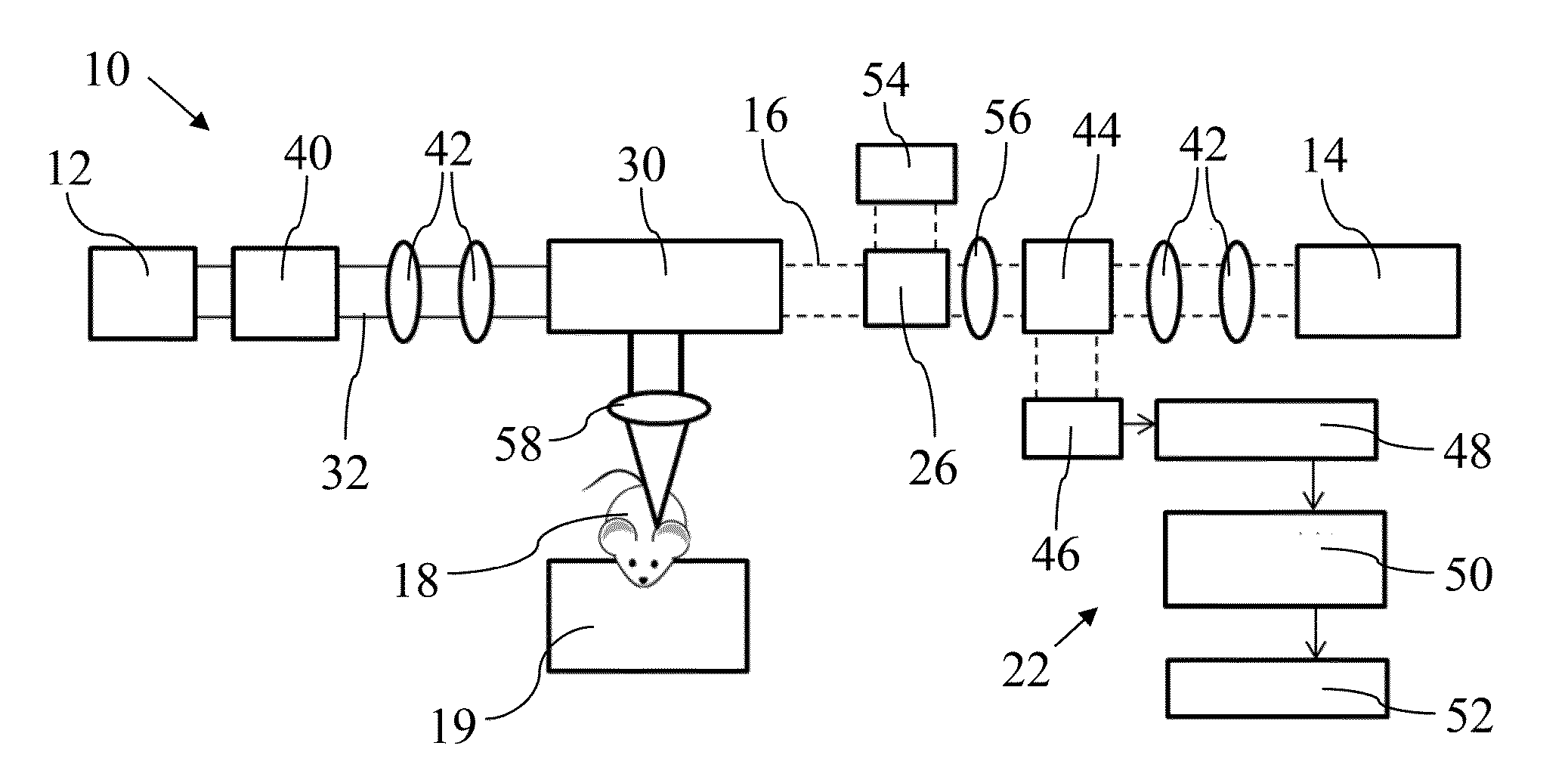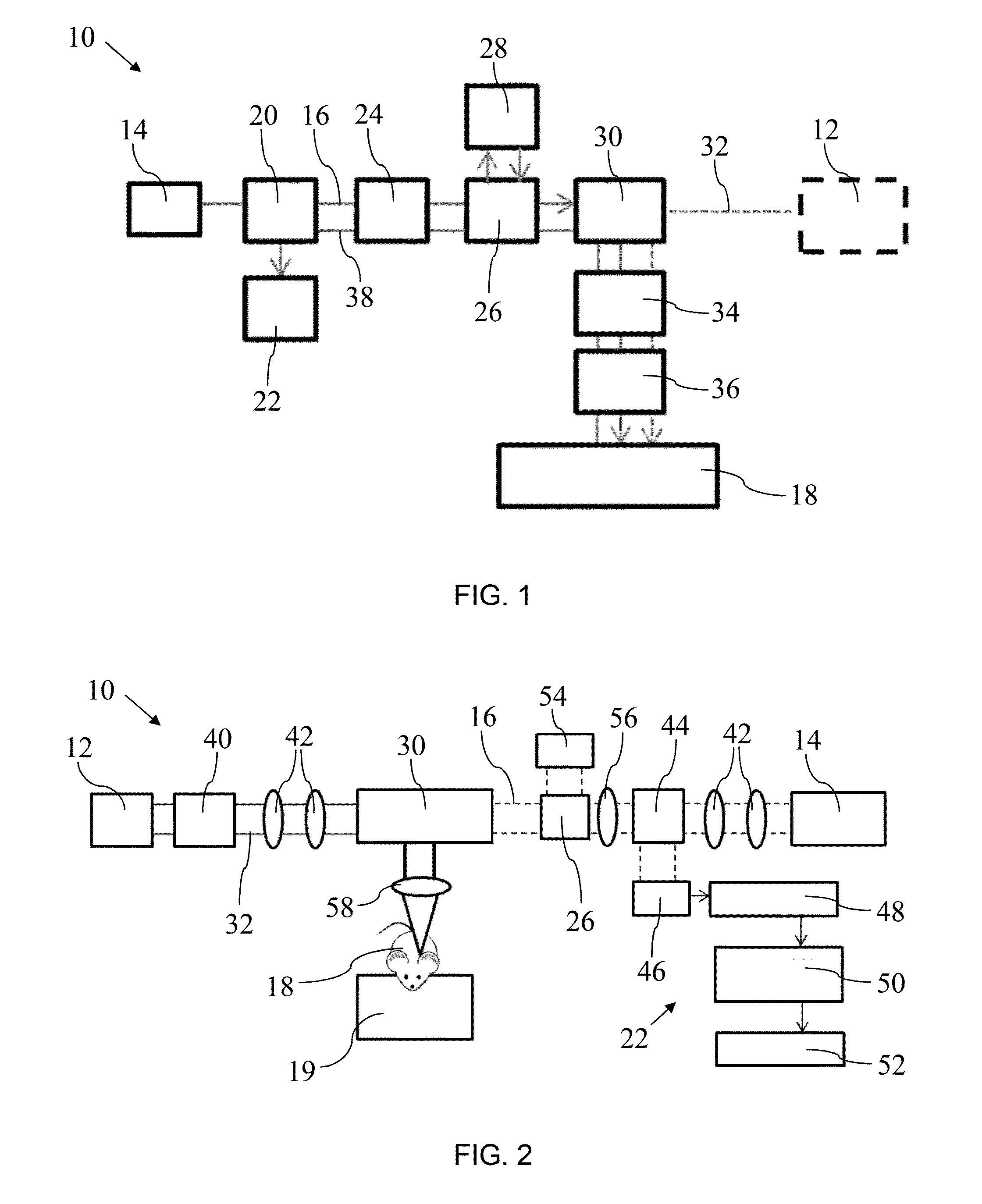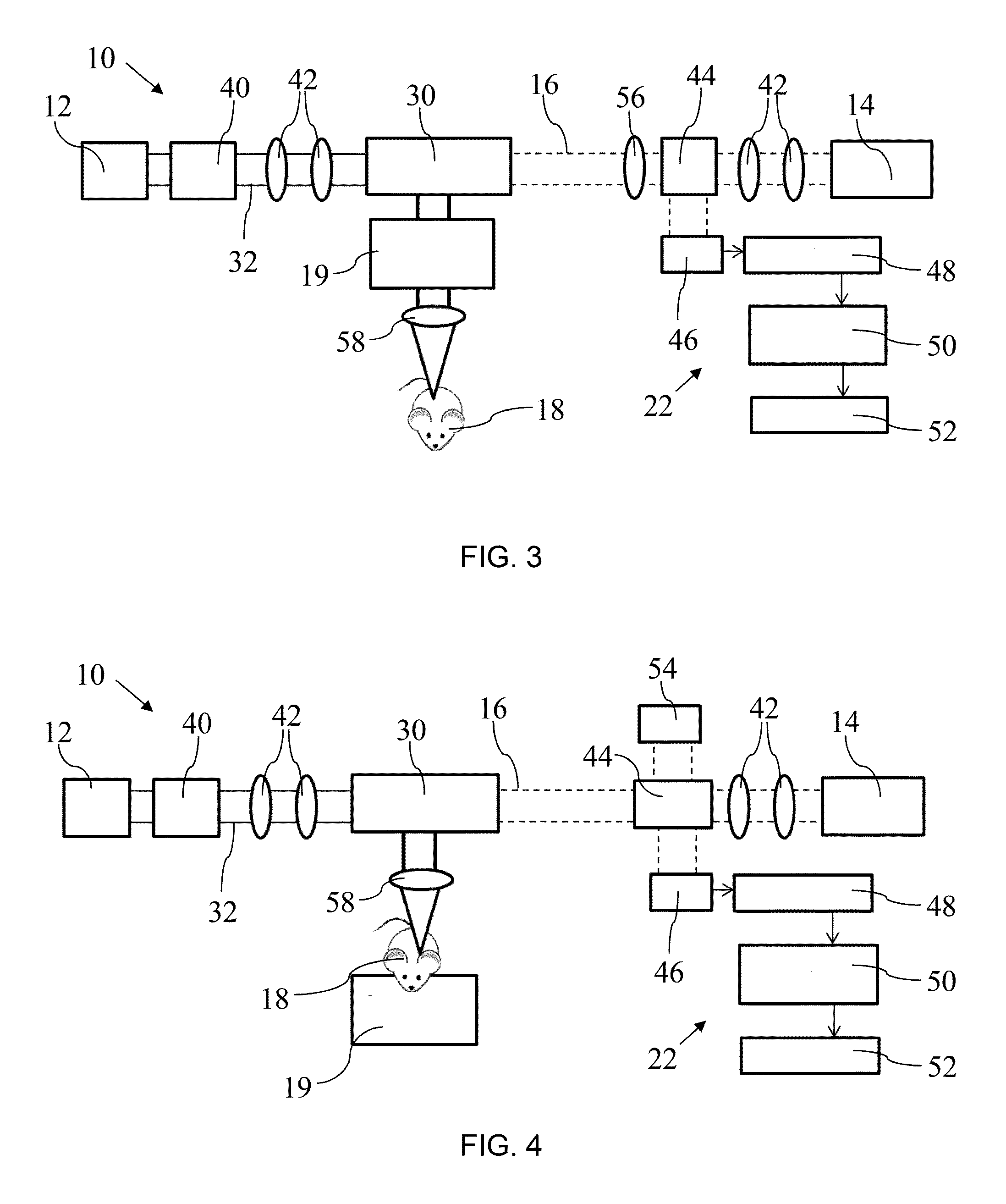Photoacoustic remote sensing (PARS)
a remote sensing and photoacoustic technology, applied in the field of biomedical optics imaging, can solve the problems of inability to achieve the desired effect,
- Summary
- Abstract
- Description
- Claims
- Application Information
AI Technical Summary
Benefits of technology
Problems solved by technology
Method used
Image
Examples
Embodiment Construction
[0046]Photoacoustic imaging is an emerging biomedical imaging modality that uses laser light to excite tissues. Energy absorbed by chromophores or any other absorber is converted to acoustic waves due to thermo-elastic expansion. These acoustic signals are detected and reconstructed to form images with optical absorption contrast. Photoacoustic (PA) imaging has been shown to provide exquisite images of microvessels and is capable of imaging blood oxygen saturation, gene expression, and contrast agents, among other uses. In most PA and ultrasound imaging systems, piezoelectric transducers have been employed, in which an ultrasound coupling medium such as water or ultrasound gel is required. However, for many clinical applications such as wound healing, burn diagnostics, surgery, and many endoscopic procedures physical contact, coupling, or immersion is undesirable or impractical. The system described herein is capable of in vivo optical-resolution photoacoustic microscopy using non-c...
PUM
 Login to View More
Login to View More Abstract
Description
Claims
Application Information
 Login to View More
Login to View More - R&D
- Intellectual Property
- Life Sciences
- Materials
- Tech Scout
- Unparalleled Data Quality
- Higher Quality Content
- 60% Fewer Hallucinations
Browse by: Latest US Patents, China's latest patents, Technical Efficacy Thesaurus, Application Domain, Technology Topic, Popular Technical Reports.
© 2025 PatSnap. All rights reserved.Legal|Privacy policy|Modern Slavery Act Transparency Statement|Sitemap|About US| Contact US: help@patsnap.com



